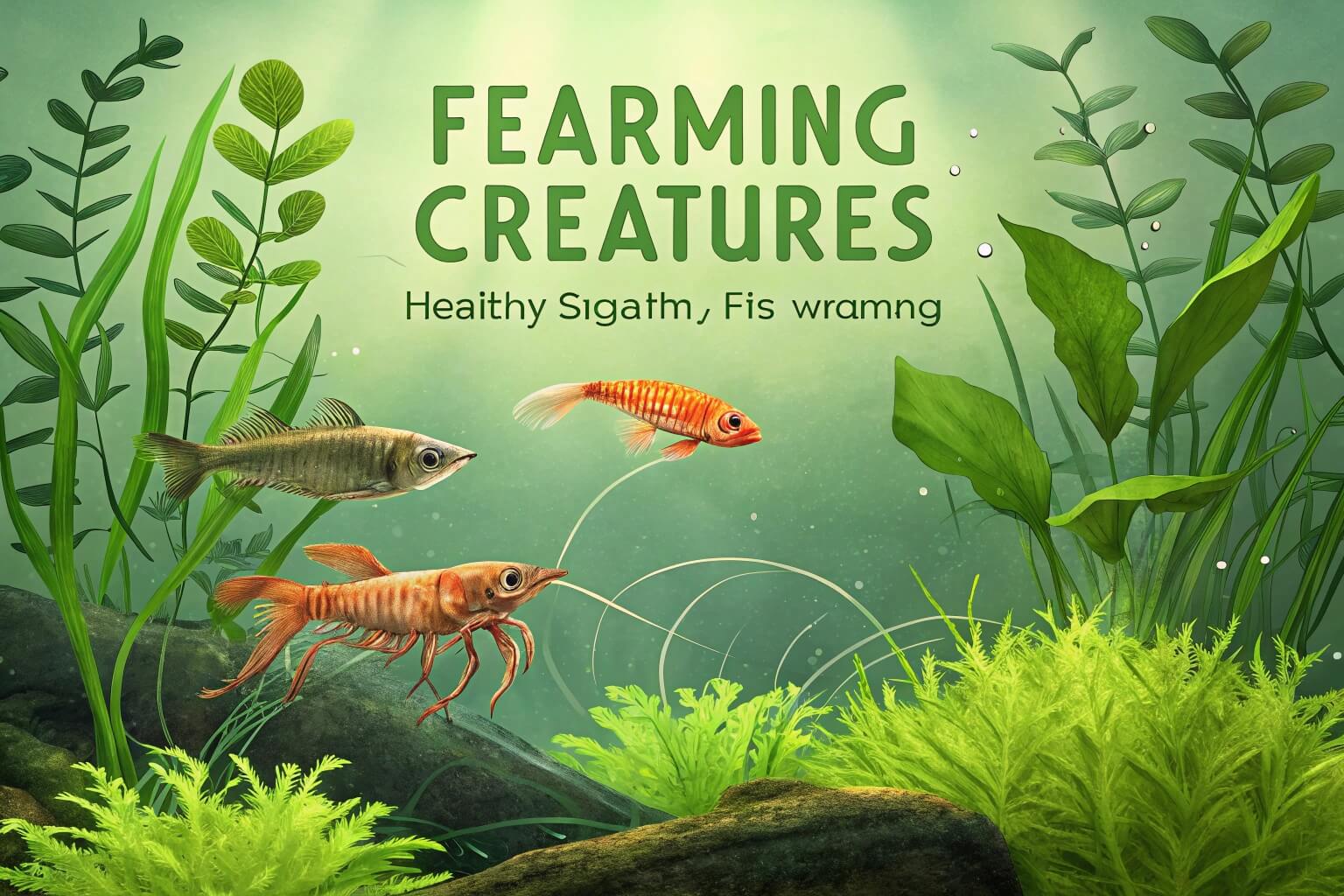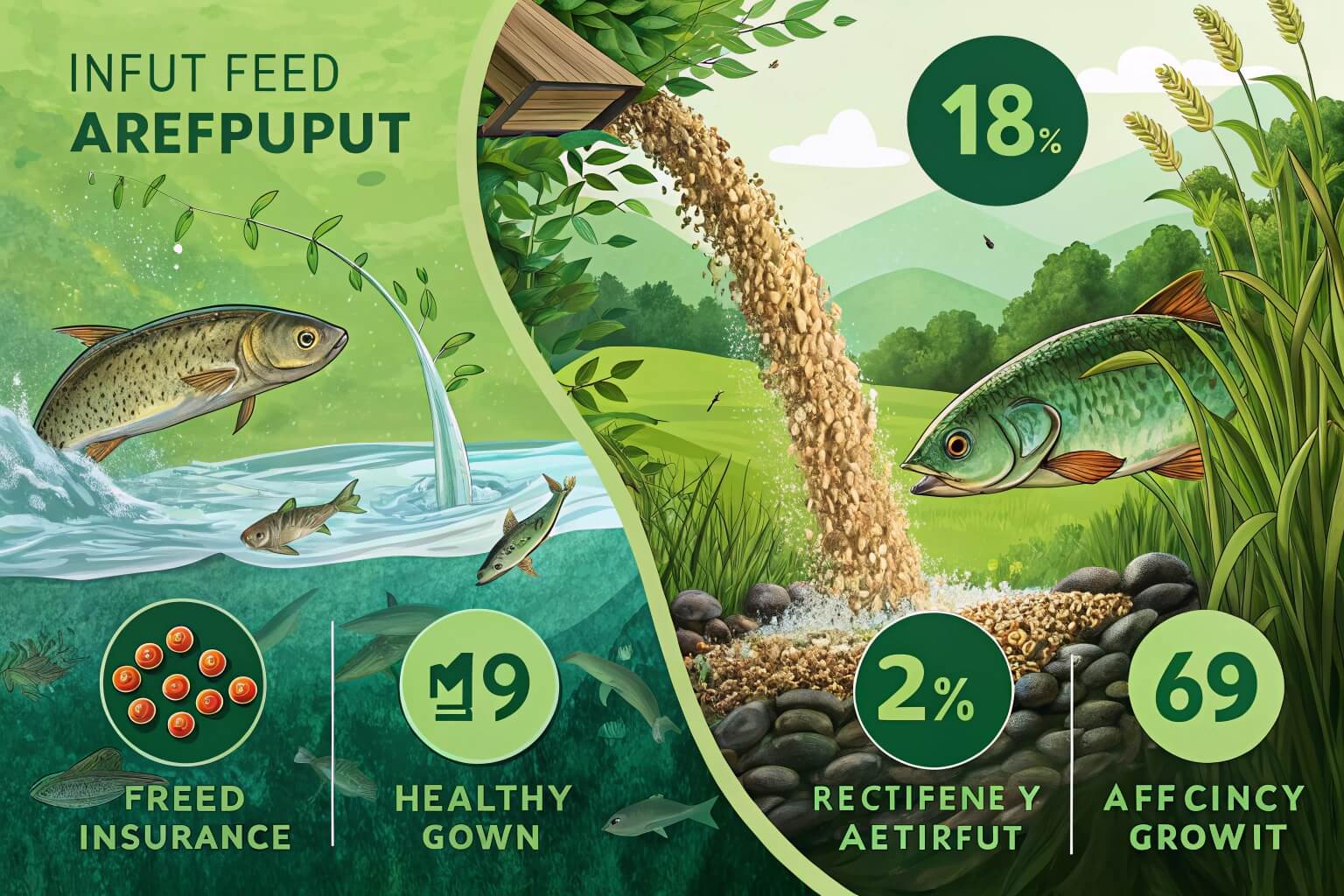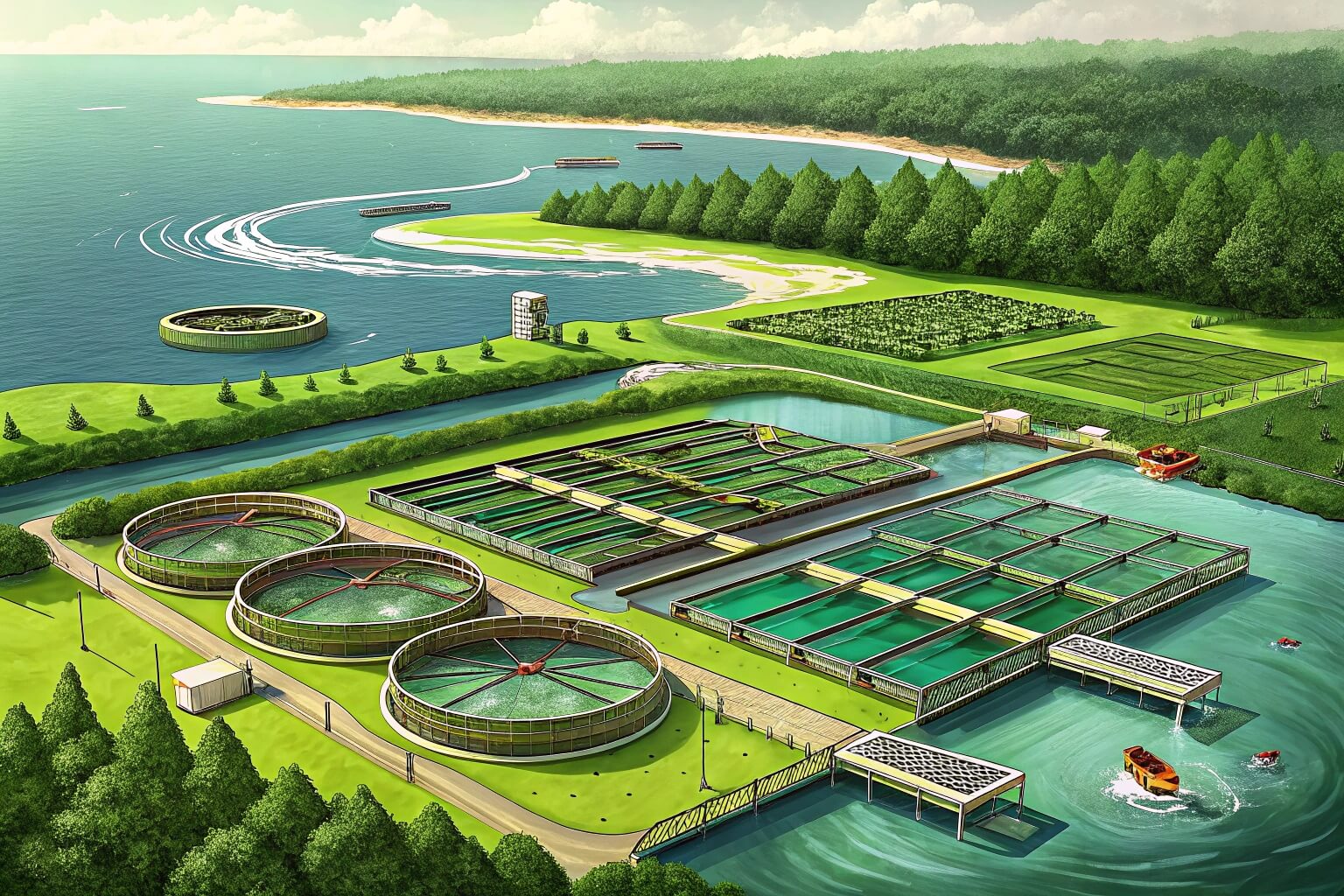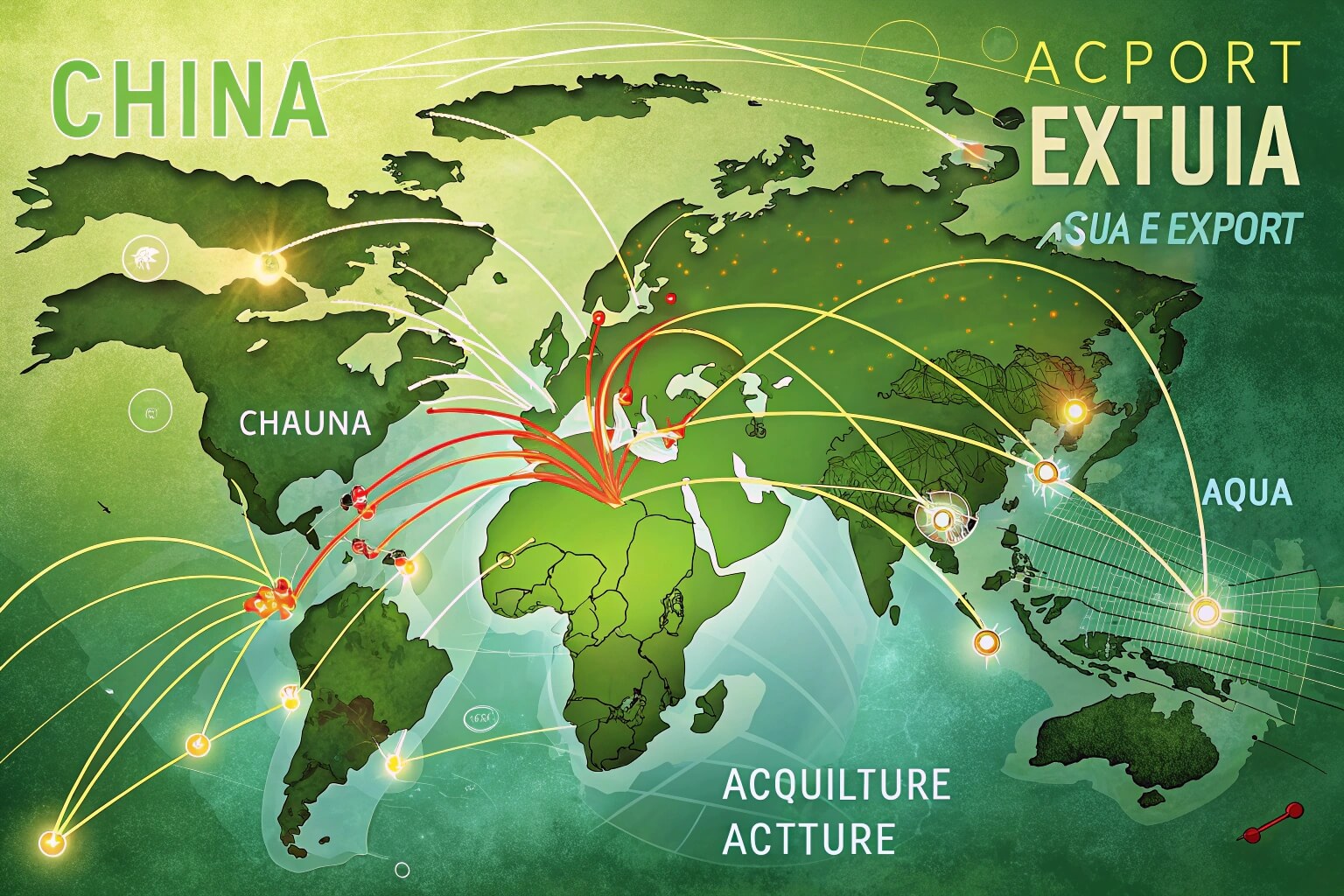What is Aquaculture Production and Why Does it Matter?
Feeling the pressure of feeding a growing world? Wild fish stocks can't keep up. Aquaculture, or fish farming, steps in as a vital solution for sustainable food sources.
Aquaculture production is the farming of aquatic organisms like fish, shellfish, and plants in controlled environments. It's different from catching wild fish, focusing instead on raising aquatic life for human use, similar to agriculture but in water.

Understanding this basic idea is just the start. Let's dive deeper into what aquaculture means, how we measure its success, the different ways it's done, and who the big players are globally. Stick around as I share my perspective from working right here in the industry with Bancy.
What is the simple definition of aquaculture?
Confused about what "aquaculture" really means? Many people think it's just farming fish, but it's a bit broader. Let me break down the simple meaning for you.
Aquaculture is simply the farming of organisms that live in water. This includes fish, crustaceans like shrimp, mollusks like oysters, and aquatic plants like seaweed, all raised in controlled or specific environments.

The Core Idea: Farming Water Creatures
At its heart, aquaculture is agriculture in water1. Instead of farming cows or corn on land, we are cultivating life in freshwater or saltwater environments. The key difference from traditional fishing is the control involved. We manage the breeding, feeding, and harvesting processes. This allows for more predictable and often more sustainable production compared to relying solely on wild catches. At Bancy, we contribute by providing the essential infrastructure, like our durable PVC fish tanks2 and frame-supported tanks3, which create these controlled environments for farmers. These tanks need to be safe, non-toxic, and strong enough to hold water and the growing organisms.
Beyond Just Fish: The Scope
While fish farming is a huge part of it, aquaculture covers a wide range of organisms.4 Think about shrimp farms, oyster beds, seaweed cultivation, and even raising crocodiles or frogs. It also includes growing algae for biofuels or pharmaceuticals, and breeding ornamental fish for aquariums. The environments vary too – from ponds and rivers5 (freshwater) to coastal estuaries and the open ocean (saltwater). Our different tank designs at Bancy, like the GALVANIZED SHEET FISH TANK6 for durability or the COLLAPSIBLE PLASTIC FISH TANK for flexibility, are designed to meet the needs of these diverse applications, whether it's for commercial food production, research, or even backyard fish farming.
| Organism Type | Example | Typical Environment |
|---|---|---|
| Finfish | Tilapia, Salmon | Tanks, Ponds, Cages |
| Crustaceans | Shrimp, Prawns | Ponds, Tanks |
| Mollusks | Oysters, Mussels | Ropes, Beds, Tanks |
| Aquatic Plants | Seaweed, Kelp | Ropes, Nets, Tanks |
| Other (Specialty) | Alligators, Frogs | Ponds, Enclosures |
What is productivity in aquaculture?
Just growing fish isn't the whole story. How do you know if a farm is truly successful and efficient? That's where productivity comes in – it's a crucial measure.
Productivity in aquaculture measures how much output (like fish weight) you get for a certain amount of input (like feed, space, or time). Higher productivity means more efficient use of resources.

Measuring Success: Output vs. Input
Productivity is all about efficiency. Think of it as getting the maximum bang for your buck. The "output" is typically the total weight (biomass) of the fish or shellfish harvested. The "inputs" are everything used to grow them: feed, water, energy, labor, land or water area, and time. A key metric often used is the Feed Conversion Ratio7 (FCR), which measures how much feed is needed to produce one kilogram of fish weight; a lower FCR means higher feed productivity8. Improving productivity means optimizing these inputs to get the highest possible yield, which directly impacts profitability and sustainability. Advanced systems like Recirculating Aquaculture Systems9 (RAS) aim for high productivity by carefully controlling inputs and maximizing output in a smaller footprint.
Factors Influencing Productivity
Many factors impact how productive an aquaculture operation can be. These include:
- Water Quality: Clean water with proper oxygen levels is essential.
- Temperature: Each species has an optimal temperature range for growth.
- Stocking Density: How many fish are in a given space affects growth and health.
- Feed Quality & Strategy: Using the right feed and feeding methods minimizes waste and maximizes growth.
- Disease Control10: Preventing and managing diseases is critical to avoid losses.
- Technology & Equipment: The quality of tanks, filters, and monitoring systems plays a big role.
From my experience at Bancy, using high-quality equipment makes a difference. Our double-layer welding technology11 ensures tanks are leak-proof and durable, reducing risks. Using food-grade PVC materials12 ensures safety. While we don't currently focus on insulated tanks, the structural integrity of our tanks helps maintain stable conditions, supporting better control over the farming environment and ultimately boosting productivity.
| Factor | Impact on Productivity | How Bancy Helps (Examples) |
|---|---|---|
| Water Containment | Prevents loss, maintains volume | Durable tanks, Double-layer welding for leaks |
| Environment Control | Stable space for growth | Customizable tank sizes/shapes for density |
| Hygiene | Reduces disease risk | Smooth, easy-to-clean PVC liners |
| Durability | Reduces downtime, replacement costs | High-quality materials (galvanized steel, PVC) |
| System Design | Matches method (e.g., RAS) | Customizable tanks fit specific system needs |
What are the methods of aquaculture production?
So you want to farm aquatic life, but how exactly do you do it? There isn't just one way. Let's look at the common methods used around the world.
Aquaculture production uses various methods, including open systems like ponds and cages in natural waters, and more controlled systems like tanks, raceways (flowing water channels), and highly intensive Recirculating Aquaculture Systems (RAS).

Common Aquaculture Systems
Different methods suit different species, locations, and goals.
- Ponds: These are often earthen ponds, common for species like catfish and shrimp. They can be extensive (low input) or intensive (more management).
- Cages/Net Pens13: These are structures placed in larger bodies of water like lakes or the ocean. Salmon farming often uses this method. Water flows freely through the cages.
- Raceways: These are long channels with continuous water flow, often used for trout. The constant flow provides clean water and oxygen.
- Tanks: These are land-based containers, offering high control over the environment. They are used for many species, especially in hatcheries or intensive farming. Our Bancy galvanized pipe, galvanized sheet, and plastic fish tanks14 fall into this category, providing structured environments.
- Recirculating Aquaculture Systems (RAS)15: These are highly controlled, closed-loop systems where water is filtered and reused. They require significant investment but use very little water and can be located almost anywhere. Bancy tanks are often components within RAS setups.
Choosing the Right Method
The best method depends on several key factors. You need to consider:
- Species Requirements: Different fish or shellfish thrive in different conditions (water flow, temperature, density).
- Location & Resources: Availability of land, water (fresh or salt), and energy impacts the choice. Cages need suitable open water; tanks/RAS need land.
- Capital Investment: Ponds might be cheaper initially, while RAS requires significant upfront cost.
- Intensity Level: How much product do you want to grow per unit of space or water? Tanks and RAS allow for higher intensity.
- Environmental Regulations: Rules about water discharge or land use can influence feasibility.
At Bancy, customization is key. We work with clients to understand their specific needs – the species, the scale, the location – and recommend or build the right tank solution. Whether it's a large GALVANIZED SHEET FISH TANK16 for a commercial farm or a smaller COLLAPSIBLE PLASTIC FISH TANK17 for a hatchery or research, we tailor the product. Our ability to offer custom shapes and sizes18 ensures the tanks fit perfectly into the chosen production method and available space.
| Method | Key Feature | Best For... | Bancy Relevance |
|---|---|---|---|
| Ponds | Earthen, often low-tech | Catfish, Shrimp, Tilapia (extensive) | N/A (We focus on tanks) |
| Cages | In open water | Salmon, Sea Bream (intensive) | N/A (We focus on tanks) |
| Raceways | Flowing water | Trout | Can supply header/sump tanks for raceway systems |
| Tanks | Land-based, controlled | Various species, Hatcheries, RAS, Indoor | Core product (Galvanized, Plastic), Custom sizes |
| RAS | Water reuse, high control | High-value species, Urban farming, Limited water | Tanks are essential components |
Who is the largest aquaculture producer?
Thinking globally, where does most of the world's farmed fish and seafood come from? One country stands out significantly. Let's identify the world leader in aquaculture.
China is by far the largest aquaculture producer in the world. It accounts for the majority of global farmed aquatic production, significantly outpacing any other single country.

China's Dominance in Aquaculture
China's role in global aquaculture16 is huge. It has a very long history of fish farming practices dating back thousands of years. Today, the country produces a vast quantity and variety of aquatic products, including various species of carp, tilapia, shrimp, and mollusks, as well as seaweed. Several factors contribute to this dominance: strong government support17, a massive domestic market demand, suitable geography with long coastlines and rivers, and continuous investment in farming techniques18. China is estimated to produce roughly 60% of the world's farmed aquatic food. As Bancy is based in Shandong, China, we operate right within this global powerhouse of aquaculture production. This gives us firsthand understanding of the scale, demands, and innovations happening in the industry's leading nation.
Other Major Producing Regions
While China leads, other countries also make significant contributions to global aquaculture output. Following China, several Asian nations are major players, including India, Indonesia, Vietnam, and Bangladesh, primarily farming species like shrimp, carp, and pangasius. Egypt is a major producer of tilapia19 in Africa. In Europe, Norway is famous for its large-scale salmon farming using marine cages. South American countries like Chile (salmon) and Ecuador (shrimp) are also important producers. Each region often specializes based on its climate, available species, and market access. At Bancy, we recognize the global nature of this industry. Our capability for global shipping20 allows us to serve clients not just within China but across these major producing regions and beyond, providing reliable tanks wherever efficient aquaculture is needed.
| Country/Region | Key Farmed Species Examples | Significance |
|---|---|---|
| China | Carp, Tilapia, Shrimp, Shellfish | World's largest producer (~60% of global) |
| India | Carp, Shrimp | Second largest producer |
| Indonesia | Shrimp, Tilapia, Seaweed | Major Southeast Asian producer |
| Vietnam | Pangasius (catfish), Shrimp | Major exporter, especially of pangasius |
| Bangladesh | Carp, Shrimp | Significant freshwater aquaculture |
| Egypt | Tilapia | Largest producer in Africa |
| Norway | Atlantic Salmon | Leading producer of farmed salmon |
| Chile | Salmon, Mussels | Major salmon producer |
| Ecuador | Shrimp | Major shrimp exporter |
Conclusion
Aquaculture production is essentially farming in water. It's vital for meeting global seafood demand sustainably. Success hinges on productivity, using methods like tanks and RAS, and China leads global output. Technology is key for a sustainable future.
-
Understanding aquaculture's role in sustainable food production can enhance your knowledge of modern farming practices. ↩
-
Exploring the advantages of PVC fish tanks can help you make informed decisions for aquaculture setups. ↩
-
Learning about frame-supported tanks can provide insights into effective aquaculture infrastructure solutions. ↩
-
Explore this link to understand the diverse organisms in aquaculture, from fish to algae, and their significance in the industry. ↩
-
Discover the advantages of utilizing ponds and rivers for aquaculture, including sustainability and ecosystem benefits. ↩
-
Learn about the durability and benefits of galvanized sheet fish tanks for various aquaculture applications. ↩
-
Understanding FCR is crucial for optimizing fish farming efficiency and sustainability. Explore this link to learn more about its significance. ↩
-
Explore effective strategies to boost productivity in aquaculture, ensuring better yields and profitability in fish farming. ↩
-
Discover how RAS technology enhances productivity and sustainability in aquaculture, making it a vital resource for modern fish farming. ↩
-
Discover effective disease control strategies to minimize losses and enhance productivity in aquaculture operations. ↩
-
Explore how double-layer welding technology enhances tank durability and prevents leaks, crucial for aquaculture productivity. ↩
-
Learn about the significance of food-grade PVC materials in ensuring safety and hygiene in aquaculture operations. ↩
-
Discover the benefits of Cages/Net Pens for fish farming, including water flow and space efficiency, to optimize your aquaculture approach. ↩
-
Learn how these materials contribute to effective aquaculture systems and improve fish farming practices. ↩
-
Explore the advantages of RAS, including water conservation and environmental control, to enhance your aquaculture knowledge. ↩
-
Exploring this link will provide insights into the importance of aquaculture worldwide and its impact on food security. ↩ ↩
-
This resource will help you understand the role of government policies in boosting aquaculture industries. ↩ ↩
-
Discover cutting-edge farming techniques that are transforming aquaculture and enhancing productivity. ↩ ↩
-
Discover the nutritional advantages of tilapia, a key species in aquaculture, and why it's popular worldwide. ↩
-
Exploring this resource will provide insights into how global shipping enhances aquaculture efficiency and market reach. ↩